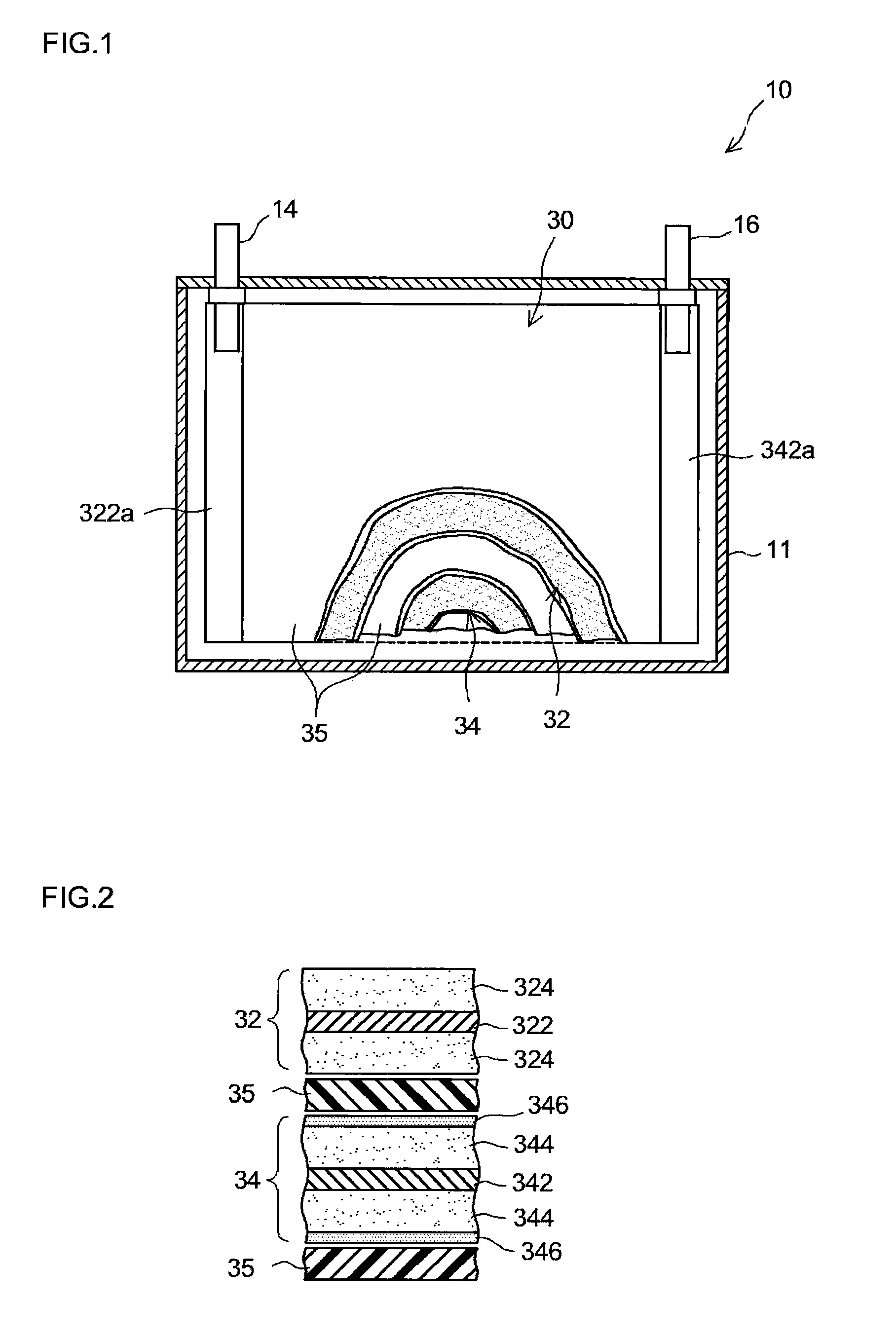Method for manufacturing nonaqueous secondary battery electrode
a secondary battery and electrode technology, applied in the direction of cell components, final product manufacturing, sustainable manufacturing/processing, etc., can solve the problems of affecting the input-output performance of the battery, and achieve the effects of low input-output resistance, excellent input-output performance, and efficient manufacturing
- Summary
- Abstract
- Description
- Claims
- Application Information
AI Technical Summary
Benefits of technology
Problems solved by technology
Method used
Image
Examples
example 1
[0071][Preparation of Negative Electrode Sheet]
[0072]Natural graphite with an average particle size of 10 μm (negative electrode active material), SBR and CMC in a ratio of 98:1:1 were mixed with ion-exchange water to prepare a negative electrode active material composition in slurry form. This composition was coated on the surface of both sides of a strip of copper foil 10 μm thick, 80 mm wide and 5000 mm long, to a total coating amount (as NV) of 8.6 mg / cm2 on both sides. The area of application of the negative electrode active material excluded a 15 mm band on the edge of the copper foil, extending in the lengthwise direction on both sides. The coated material was dried, and then pressed to a density of 1.4 g / cm3 of the negative electrode active material layer. A negative electrode preform comprising negative electrode active material layers on the surface of a negative electrode collector was obtained in this way.
[0073]Pressing was performed in an environment of dewpoint −30° C....
example 2
[0088]Ethanol (total amount used 5 mL) was sprayed on the entire surface of a negative electrode preform prepared as in Example 1. This negative electrode preform was then transferred to an environment of dewpoint −5° C., and retained in that environment until the water concentration of the active material layer surface (as measured by the Karl Fischer method) was 155 ppm. The water concentration of the inside of the active material layer was about 50 ppm. A slurry-type coating agent similar to that of Example 1 was coated on this negative electrode preform sample with a surface water concentration of 155 ppm, and dried to form a porous inorganic layer. A lithium-ion battery (Sample No. 9) was prepared as in Example 1 using this negative electrode sheet sample as the negative electrode.
[0089]The lithium-ion battery of this Sample No. 9 and the lithium battery of Sample No. 3 prepared in Example 1 were pre-charged at constant-current, constant-voltage (CCCV) to 3.5 V at 5 A. The tota...
PUM
| Property | Measurement | Unit |
|---|---|---|
| thick | aaaaa | aaaaa |
| particle size | aaaaa | aaaaa |
| particle size | aaaaa | aaaaa |
Abstract
Description
Claims
Application Information
 Login to View More
Login to View More - R&D
- Intellectual Property
- Life Sciences
- Materials
- Tech Scout
- Unparalleled Data Quality
- Higher Quality Content
- 60% Fewer Hallucinations
Browse by: Latest US Patents, China's latest patents, Technical Efficacy Thesaurus, Application Domain, Technology Topic, Popular Technical Reports.
© 2025 PatSnap. All rights reserved.Legal|Privacy policy|Modern Slavery Act Transparency Statement|Sitemap|About US| Contact US: help@patsnap.com



